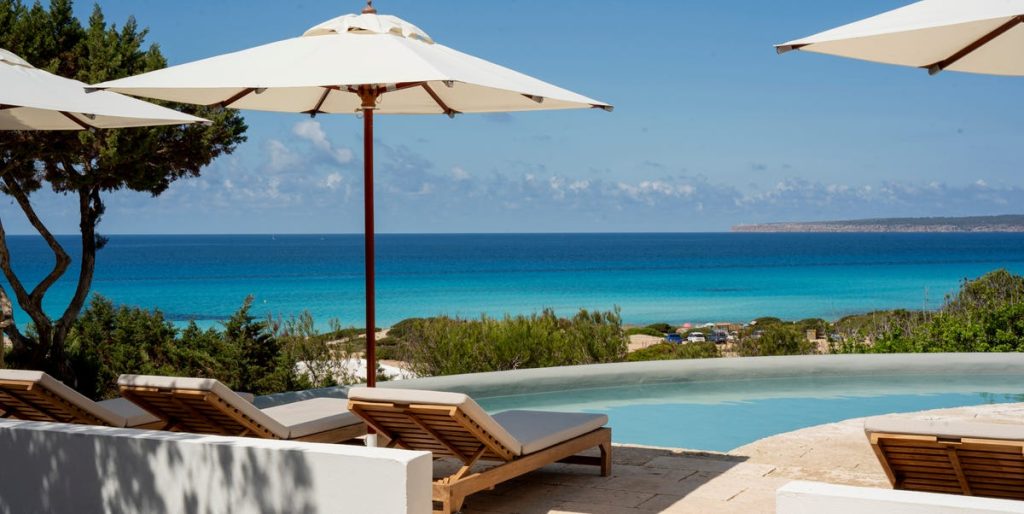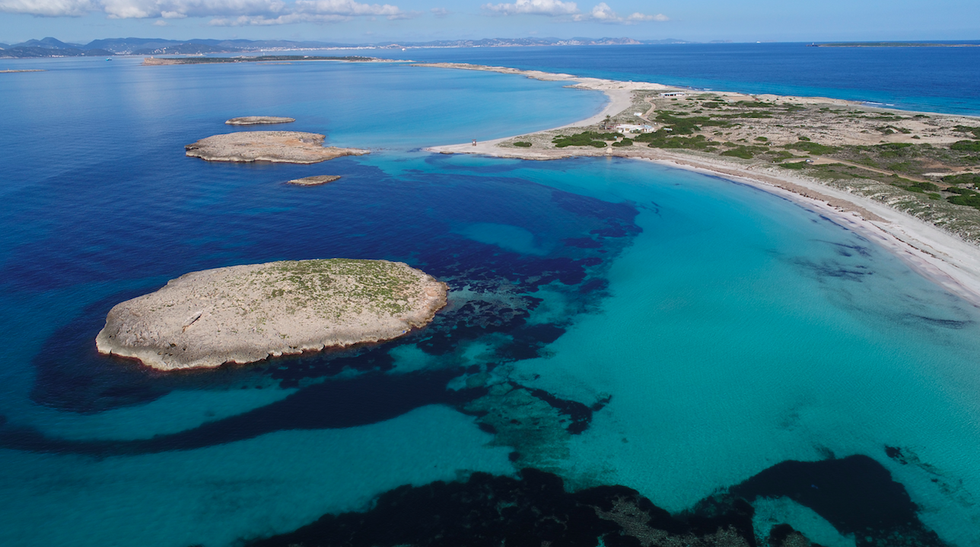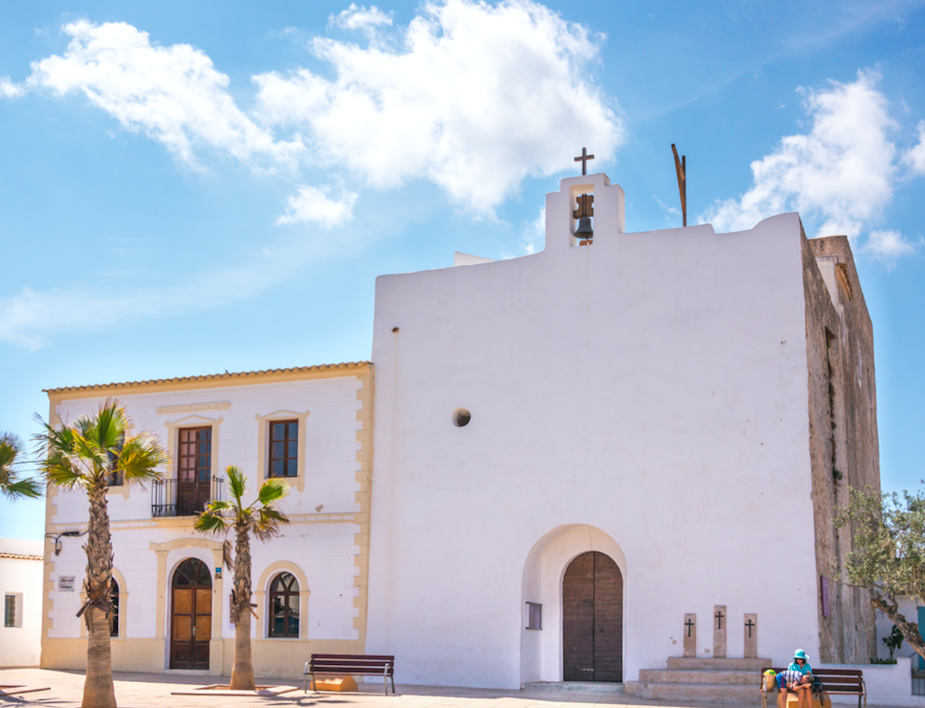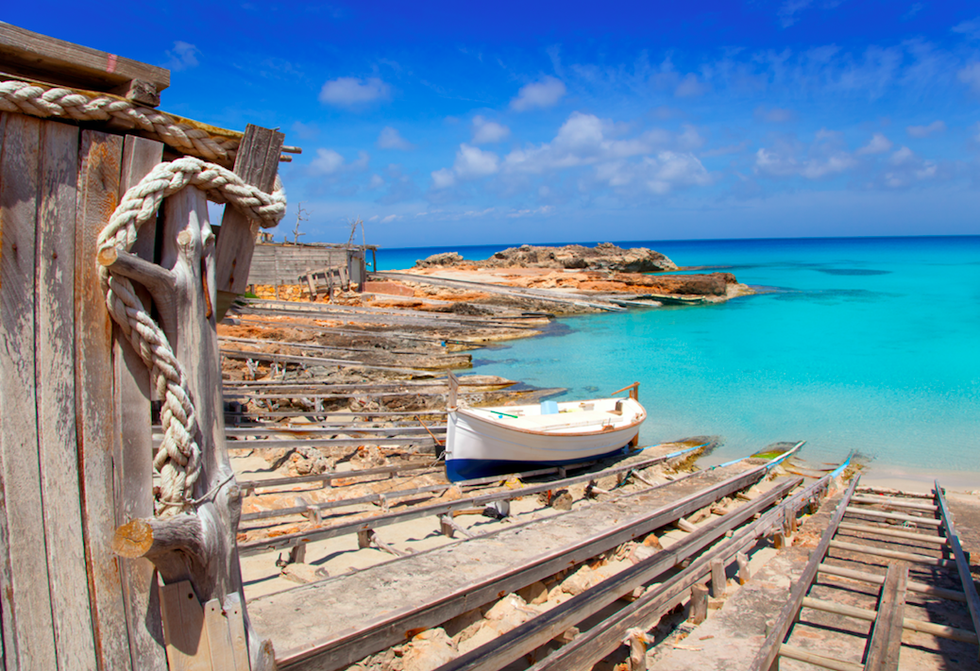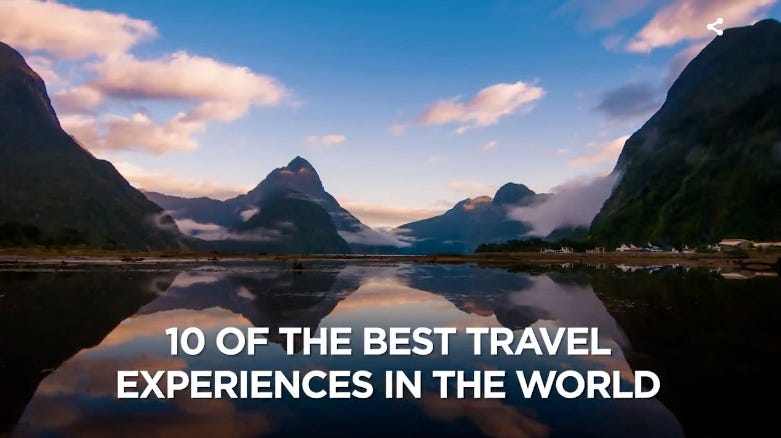The Balearics have their big hitters; Menorca, Mallorca and, of course, the flagship White Island of Ibizawhich is home to more house beats and overpriced margaritas than you can shake a stick at with a glow stick. But there's more to this idyllic island chain than just parties – and the discerning crowd turns its gaze to the archipelago's quieter little sister: Formentera.
How to get there
Formentera is the southernmost of the Balearic Islands, just under 15 km from Ibiza. Until recently, the only way to reach the island was to ferry from Ibiza, that’s how we went there this summer. The journey takes just half an hour and the ferries are incredibly regular (around every half hour or more frequently). You can also now ferry there from different ports in mainland Spain.
Why go there?
The difference when disembarking is palpable. If Ibiza has buzz, Formentera has a sleepy but nonetheless all-encompassing atmosphere. Our hotel (more details below) arranged a transfer – a convenience not to be taken for granted, as taxis can be difficult to find. The island's small roads are relatively car-free, with the approximately 10,000 residents traveling mainly by bicycle or moped. It makes you believe that you have gone back in time; not out of a sense of archaism or dilapidation of the architecture or infrastructure, but simply because of the slower pace it insists on; the “vibration”.
Vibe is a huge, if indefinable, factor when it comes to the Balaerics. Formentera, just like – but more pronounced than – its more infamous relatives, has a distinctly bohemian streak. Spiritual ley lines cross the island, including one linking its famous Neolithic stone circle, Ca na Costa, to Dalt Vila in Ibiza's old walled town; a place that has been everything from a Phoenician temple to a Catholic cathedral. All over the island you'll find yoga venues and meditation retreats, and each hotel is determined to instill the laid-back atmosphere that characterizes Formentera. The island was once home to a large hippie community (its members were known as “peluts” – “hairy” in Catalan, because of their shaggy hair) and many of the island's institutions still have a faded look, which remind you of his true casual credentials. One of them is the iconic Fonda Pepe hostel in Sant Ferran, which looks a lot like it must have looked in the 1960s.
What to do?
Formentera is full of wonderful little towns and villages full of character and charm. The small town of San Francesc, which closely resembles the island's capital, has an arts and crafts market next to the main church and this is even surpassed by the craft market of La Mola, held every Wednesday and Saturday just outside the village of El Pilar de la Mola. Stalls are full of ceramics, jewelry and more – all made by local artists on the island – and there is live music in the central square and cocktails can be enjoyed on one of the many terraces. bars surrounding the market. You must also visit Es Caló, a small village on the coast where you can see picturesque fishermen's huts on the port.
Where to stay?
Of course, Formentera has long attracted more than just “peluts”. Joni Mitchell wrote her 1971 album Blue here, and Bob Dylan once lived in the Cap de Barbaria lighthouse. Today he is a favorite of the British fashion world (Kate Moss, Charlotte Tilbury, Sienna Miller and others) as well as international celebrities. One day during our stay we accidentally became spectators of Lionel Messi's 35th birthday party.th birthday lunch, as he dined on the table next to us at our hotel with fellow footballers Cesc Fabregas and Luis Suarez, who had moored their mega yacht just offshore.
To respond to the increasingly luxurious appeal of Formentera, major investments have recently been made in tourism, particularly in the hotel sector. There is embarrassment of choice, of the refined modernity of Hotel Gecko & Beach Clubwhich underwent a seismic and costly renovation in 2017, in the idyllic setting Can Tres; a handful of whitewashed apartment buildings nestled among orange, lemon and olive trees, just a short walk from Migjorn Beach, one of the longest and prettiest on the island.
However, we opted for the newly opened restaurant Dunes of Formenterawhich lies among the sand dunes of Migjorn Beach. The boutique hotel is low-key but undeniably luxurious (a delicate balance that many properties strive to achieve, but few succeed), with a welcoming team and a relaxed, relaxed atmosphere. All neutral tones and raw feel – linens, terracotta, wood and ceramics abound – the hotel's interiors were designed by Palma-based studio Antonio Obrador (whose work can also be seen at the aforementioned Gecko Beach House & Beach Club), with an emphasis on indoor-outdoor living. Although the overall effect is one of effortless simplicity, it is clear that the design process was anything but: with immaculate finishes, thoughtful curation and exceptional attention to detail.
We stayed in a junior suite, an elegantly streamlined and comfortable space with a balcony overlooking the turquoise water. Each of the 45 rooms – some in the main house, others in private bungalows – are connected by stone paths and wooden walkways across the dunes, creating a community atmosphere designed for friends and family. Some rooms can be customized to add children's beds; they are some of the largest in Formentera, measuring up to 40 square meters. All guarantee confidentiality.
If you can drag yourself away from your room, you'll have direct access to the beach, just a few meters away, and you'll also want to spend a lazy afternoon by the hotel's central curved infinity pool, sipping a cocktail, feeling the warm Mediterranean breeze and taking a dip to cool off.
As the island's first eco-luxury resort, Dunas de Formentera also takes its sustainability credentials seriously. These are not just empty words; responsible practices have been integrated throughout and the hotel clearly respects its environment, with the aim of using “what is already there”.
Where to eat?
In Formentera, you are lucky to have a multitude of excellent restaurants. A visit would not be complete without a stop at Juan and Andrea – an island institution founded in 1971 by a local fisherman (Juan) and his wife (Andrea) and located on the famous Playa de Ses Iletes. Inside the island you will also find the “secret garden” of In my own waywhich serves some of the best dishes in Formentera. A similar ambiance in the island's rural enclaves can be found at the garden restaurant of Hotel La Casbah; a gorgeous under-the-radar find surrounded by a pine forest.
Dunas de Formentera's restaurant, Caliu, is also not to be missed. Here, the tapas-style sharing menu is varied and delicious, with fresh seafood, Neapolitan pizzas and garden vegetables, each recipe using local ingredients from the land and sea.
During our stay at the hotel, we enjoyed a fresh sea bass of the day – cooked on the fire, then prepared and served at the table – and, for lunch the next day, we devoured a good portion of crispy calamari, tuna tartare and grilled vegetables, washed down with a refreshing local white wine.
What not to miss?
The beaches are of course the calling card of Formentera. There is an embarrassment of riches here, all sand with azure waters, and some of the most attractive coastal views in the Mediterranean. The most beautiful are Playa Cala Saona, Playa Es Pujols, Playa Ses Illetes, Playa de Cavall d'en Borrás – part of the Ses Salines Natural Park – and our own Playa Migjorn. To fully enjoy it, we took a boat trip to the island in The floating islandsnorkel in crystal-clear waters and through rock caves and sail to the sandy spit of the private islet of S'Espalmador, which resembles the luxurious lair of a Bond villain (at its best). possible way).
It was here, sandy, salty and sleepy, returning in that golden hour before sunset, that we could truly admire the quiet magic of Formentera. She is the ideal choice for anyone in need of a dose of peaceful luxury on one of the Mediterranean's most stunning hidden gems.

